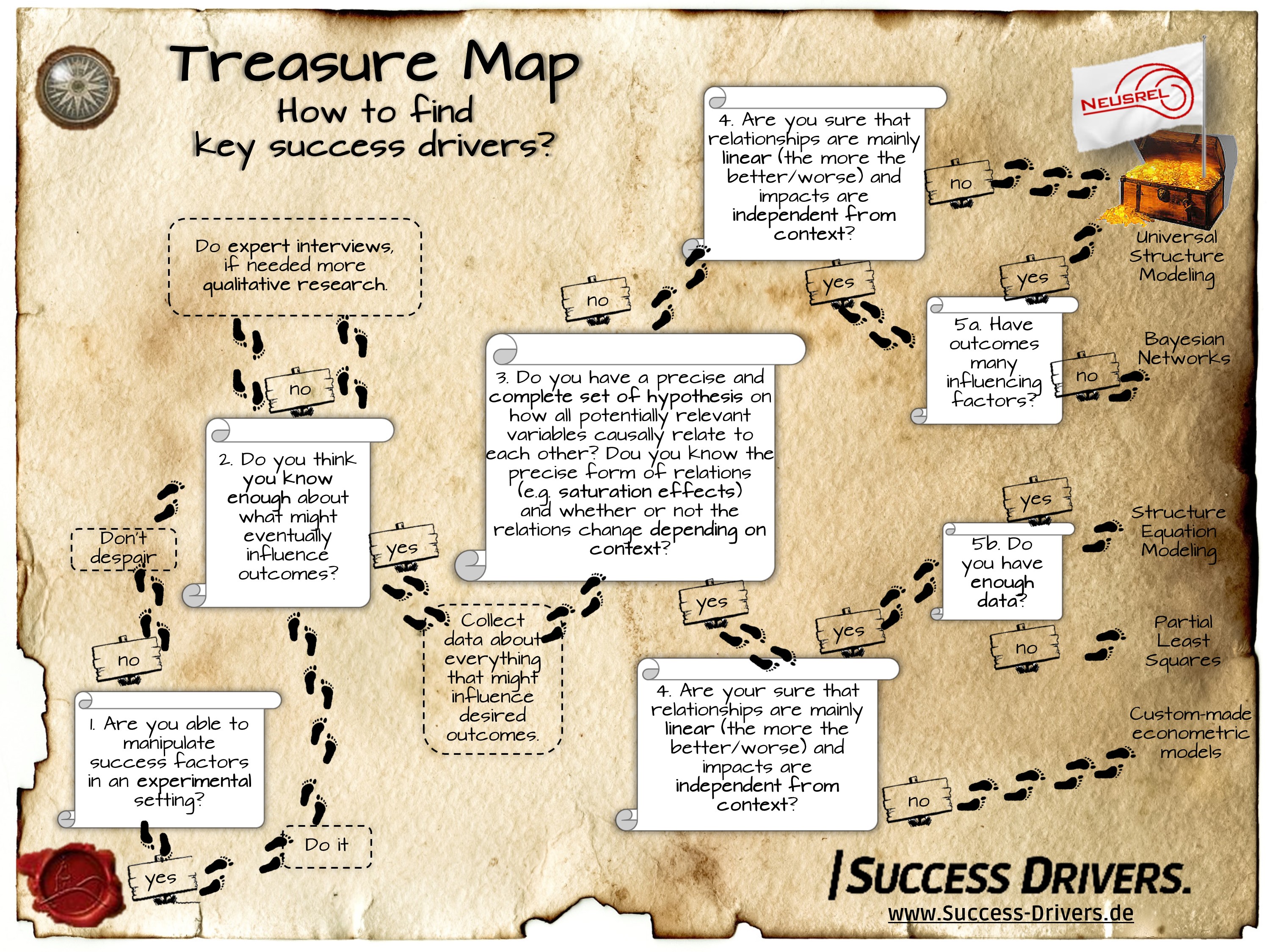
A question that’s puzzling at first: Aren‘t there many ways to find insights? Yes and no. There are various steps in the process and depending on the situation in which you find yourself, different methods are advisable.
Some things in life are simple. You try them out and, with experience, you notice what works and what doesn’t. Now in marketing and sales that approach doesn’t work anymore. Too many factors drive outcomes simultaneously. On top of this, actions need some time before they bear fruits. In the end, it is no longer possible to tell which actions had which influence – just from looking at the changes in measure of success.
What’s to do? (1) Trial and error is still the best way to find out if something works. Only you have to track all other relevant influences in order to subsequently be able to understand the exact effect of the measures taken. Sometimes however, testing is too risky or results in immense costs.
Under the assumption that one of the ways to fine-tune success isn’t controlled by a completely different background variable, the same findings can be read from the data sets even without experimenting. This is exactly what key driver analyses do.
Qualitative research is a necessary, preliminary step for quantitative key driver analyses
(2) The danger that your results are erroneous increases when the models aren’t complete and important drivers are missing. It is especially important to take into account the drivers that influence other drivers as well as the end results. Exactly for this reason, it’s essential to have a good, qualitative preliminary phase. The subject matter and the relevant factors have to be well understood.
Only the qualitative phase isn’t enough on its own. It is not appropriate for correctly assessing the importance of a cause. Time and again in qualitative projects, researchers gain the impression that they understood exactly the key factors for success.
However, studies show that for various reasons, this is almost never the case. Still, qualitative methods are capable to discover what could be important and this is always the first key step.
The fundamental question: Do you want to test hypotheses or discover new properties and relationships?
(3) Only now does the quantitative driver analysis come into play. The choice of the right method depends on the question: how much do you already know about the relationships between the variables? Do you know the principal relationships between the aspects and would you like to measure how strongly these assumed relationships actually are? Then it’s advisable to use either econometric models or the process of structure equation modelling.
If this isn’t the case, then you need explorative methods. (4a) If you are certain that it’s enough to accept linear relationships and to assume that drivers don’t contribute to their effect, then Bayesian Networks (also called “Directed Acyclic Graphs”) are a good choice, as long as outcomes don’t have a lot of possible direct key success factors.
(5a) However, according to our experience, all of these assumptions can hardly be justified in practice. In these cases, Universal Structural Modelling offers the flexibility, free from such assumptions, to be able to map how the relationships actually play out.
The approach is implemented and available in the NEUSREL software.
p.s. More on NEUSREL and Universal Structural Modeling here.
